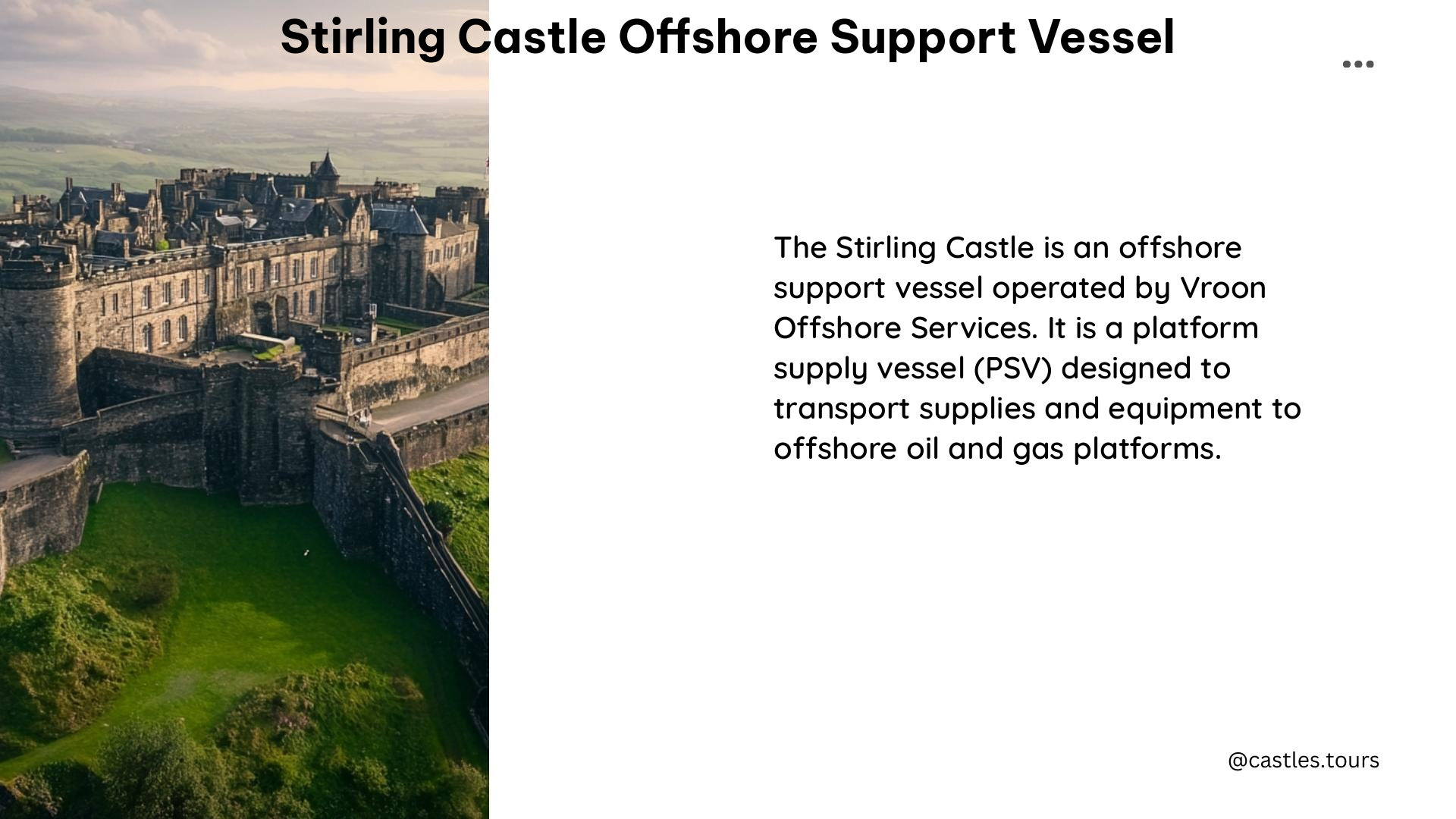The Stirling Castle offshore support vessel is a significant addition to the Royal Fleet Auxiliary (RFA) and plays a crucial role in supporting mine-hunting operations. As a trials platform for autonomous mine-hunting systems, the Stirling Castle is designed to operate as an offshore forward operating base, deploying Mine Countermeasures Maritime Autonomous Systems (MCM MAS) and drones to protect offshore subsea infrastructure.
Current Status and Expected Role

As of April 2024, the Stirling Castle has formally entered service with the RFA. After undergoing extensive conversion at HMNB Devonport and completing sea trials, the vessel is now operational and has been engaged in operational sea training in preparation for work with the Mine and Threat Exploitation Group at the Clyde naval base.
The Stirling Castle is expected to play a vital role in the Royal Fleet Auxiliary by providing a platform for the development and deployment of autonomous mine-hunting systems. It will also be used for training RFA personnel on MCM MAS operations, helping to fill the gap left by the retirement of the Royal Navy’s Sandown-class minehunters, which are scheduled to leave service by 2025.
Vessel Specifications

The Stirling Castle offshore support vessel has the following key specifications:
| Specification | Value |
|---|---|
| Length | 96.8 meters (317 ft 7 in) |
| Beam | 20.0 meters (65 ft 7 in) |
| Draught | 6.0 meters (19 ft 8 in) |
| Displacement | 6,000 tonnes |
| Propulsion | Diesel-electric propulsion with four diesel generators and two azimuth thrusters |
| Crew | 100 personnel |
| Aviation Facilities | Helipad |
| Cost | £40 million (acquisition cost from Island Offshore) |
| Builder | Vard Brăila, Romania |
| Year of Build | 2013 |
| Homeport | HMNB Clyde |
Additional Details
The Stirling Castle was previously known as MV Island Crown and was used as an offshore supply vessel operated by Island Offshore. The vessel’s conversion was completed in May 2023, and it began sea trials prior to assuming its new role.
One of the key features of the Stirling Castle is its crane, which has a safe working load of 10 tonnes at a 34m radius and 5 tonnes at a 40m radius. This crane is used for deploying unmanned systems, such as the MCM MAS and drones, which are crucial for the vessel’s mine-hunting operations.
Conclusion
The Stirling Castle offshore support vessel is a valuable asset for the Royal Fleet Auxiliary, providing a versatile platform for the development and deployment of autonomous mine-hunting systems. Its capabilities will play a vital role in supporting the Royal Navy’s mine countermeasures operations, ensuring the protection of critical offshore infrastructure and contributing to the overall maritime security of the United Kingdom.
References
- https://www.navylookout.com/up-close-with-rfa-stirling-castle-first-of-the-navys-new-motherships/
- https://www.royalnavy.mod.uk/news/2024/april/11/20240411-mine-hunting-support-ship-rfa-stirling-castle-welcomed-into-navy-family
- https://www.vesselfinder.com/vessels/details/9630535
- https://www.royalnavy.mod.uk/news/2023/march/31/230330-new-ship-named-stirling-castle
- https://en.wikipedia.org/wiki/RFA_Stirling_Castle
